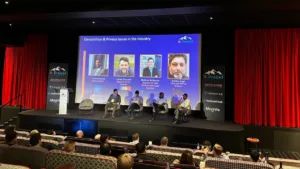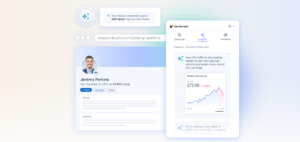by Andreas Arentoft, Partner & Go-to-market (Tech) at Precis Digital
The AdTech landscape is packed with solutions that are single-purpose, short-lived, and ultimately more of a gimmick than a real asset. This makes picking the right one tough, especially as the market is flooded by new, AI-powered tools. If you’re not careful, you can easily find yourself walking away with a solution with poor integrations, bad usability, or which relies on the fast-crumbling cookie.
Let’s dig into some ways to avoid them.
Integrated > Best-in-class
When developing their AdTech suite, most companies don’t have a clear process and rarely make holistic decisions based on their strategy. The first mistake I usually see: best-in-class doesn’t mean best for you.
This holds especially true nowadays where the market is flooded with “cutting-edge” AI tools. However, these players who are early in their journey rarely integrate seamlessly with the rest of your tech stack, making it very unlikely that they generate enough value for your business to justify the investment. For example, if you’re looking at tools for advanced audience segmentation, you’ll want to make sure that you can extract CRM data easily into your cloud environment; such an integration can be extremely costly to develop and maintain if it doesn’t exist out of the box, so it’s important to avoid the overhead of building and maintaining it yourself by planning your tooling carefully.
It is also important to remember that when we talk about integration, we’re not just referring to technical integration. People also need to be onboarded to new tools. You might buy the James Bond Aston Martin of AdTech, but if your team is still learning how to ride a bike, you’ll spend more time adjusting the seats than using the integrated machine guns. Any solution you add to the workflow needs an internal stakeholder to own training and explore new usage to get the most value from your investment. There is no shame in picking a solution you are familiar with, since getting it running might be much easier and much faster.
Buy long-term
You need to be thorough when evaluating the tools on the market. An often overlooked expense is the overall cost of change. This includes everything from the technical implementation costs to indirect costs like the lost efficiency of your analyst needing to learn a new interface. You really want to avoid changing providers frequently.
A common cause of short-termism stems from companies buying technology to solve a problem. A single problem.
Instead of asking: “We need better audience segmentation for our email campaigns! What tool can help us do that?”.
You should ask: “What is our strategy for audience segmentation and how can we leverage technology to have a unified approach across all our channels and touchpoints?”
The vendor selection process is much more effective with multiple applications in mind, since you’d aim to maximise the value of your investment by leveraging it much more broadly.
AdTech has always been a fast evolving ecosystem, but never has that been more true than today where the combined forces of exponential technical advancements and the privacy revolution are accelerating the pace of change. You don’t just need to consider whether a solution meets a specific need, but also whether it’s likely to be obsolete due to innovations such as Generative AI, or whether the tool might fall foul of the ever-complexifying web of regional and local data legislation in the near future.
These factors make long-term thinking difficult. But by asking the right questions, involving cross-functional stakeholders, and buying for future needs rather than current, you’re more likely to make sound investments that will generate value beyond the here and now.
The hard truth: doing the work works
The market is awash with technology that claims to do all things for all brands. And with CMOs expecting to use a quarter of their budget on technology (Kantar, 2022), making the wrong decisions could be a costly and time consuming mistake.
Getting it right requires work. By keeping in mind three guiding principles, you’re most likely to build a tech stack that matches your strategy: (1) consider technical integration between tools to avoid needing to build costly workarounds, (2) consider the full cost of change, including upskilling, and (3) think about long term, cross-functional solutions.









